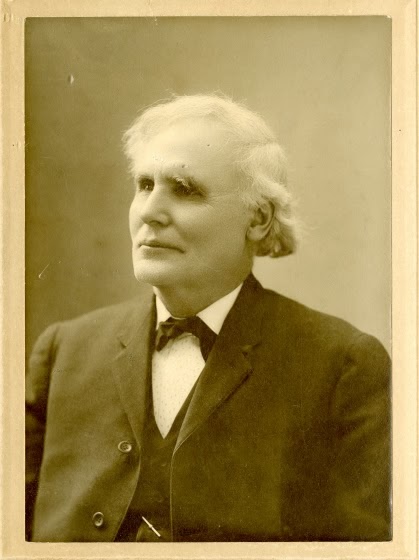 |
| Portrait of T.H. Tibbles. Thomas
Henry Tibbles papers (NMAI.AC.066), National Museum of the American Indian, Smithsonian Institution. |
The Thomas Henry Tibbles papers are a perfect example of this type of collection. Thomas Tibbles was a crucial player in bringing the Habeas Corpus case of Standing Bear and the Ponca people before the United States District Court in 1879. At the time, Tibbles worked as a journalist for the Omaha Daily Herald and publicized the unlawful removal of the Ponca from their lands to Indian Territory and the subsequent arrest of Standing Bear and 30 other Ponca when they returned to Nebraska.
 |
| His History Illustration of
Standing Bear, undated. Thomas Henry
Tibbles papers (NMAI.AC.066), National Museum of the American Indian, Smithsonian Institution |
 |
| Letter excerpt from Susette La Flesche to T.H. Tibbles. April 29th, 1879. Thomas Henry Tibbles papers (NMAI.AC.066), National Museum of the American Indian, Smithsonian Institution |
Tibbles continued to write and edit for various publications in Nebraska until his death in 1928, leaving his autobiography Buckskin and Blanket Days: Memoirs of a Friend of the Indians unpublished. In 1939, Tibbles’s grandson, Chester Barris, began contacting editors to publish his grandfather’s autobiography. Although he did not live to see it published, his wife managed to get the book published in 1957 by the University of Nebraska Press. Following the publication, Vivien Barris corresponded with Frederick Dockstader, Director of the Museum of the American Indian, Heye Foundation, and deposited the papers of her late husband’s grandfather into the care of the museum.
Fifty-some years later, this collection is getting some much deserved care. The photographs are being moved into climate controlled storage for preservation purposes and some of the more fragile documents were treated by paper conservators last spring. A new collection record is now up on the Smithsonian Collections Search Site and a detailed finding aid is in the works. For more information on this collection contact the NMAI Archive Center.
Rachel Menyuk
Archives Technician, NMAI Archive Center







Excellent content
ReplyDelete